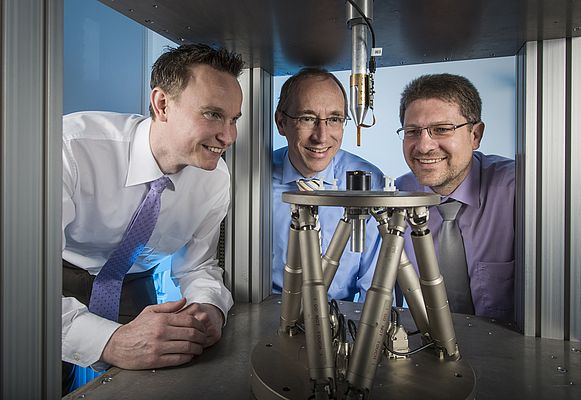Magnetic field sensors are a contact- and wear-free means of measuring the position of machine parts and products. A new generation of Hall sensors is now making the process even more precise and free of interference. They are capable of measuring all three spatial axes of a magnetic field and calculating the exact position of an object. The sensor chip contains a designated sensor for each of the three magnetic axes. These sensors are placed together in the pixel cell and attain a resolution of just a few microteslas depending on the measurement speed. Tesla is the unit for magnetic flux density. Also integrated directly on the chip are the evaluation circuit and a coil, which enable self-testing and calibration. "In spite of its complexity, the HallinOne magnetic sensor can be manufactured using standard processes of semiconductor technology - and that makes it cost-effective," explains Dr.-Ing. Hans-Peter Hohe from the Fraunhofer Institute for Integrated Circuits IIS. "Our next goal is to develop a sensor for 5-axis position measurement," says Michael Hackner of Fraunhofer IIS. "This will allow us to detect more mechanical degrees of freedom simultaneously, including translatory and rotary movements by the magnet in all directions. It already works in laboratory tests, but the system still needs some adjustments before it is ready for real-life applications." Such applications could include use in the control systems of computers, construction machines, robots and airplanes.
























































